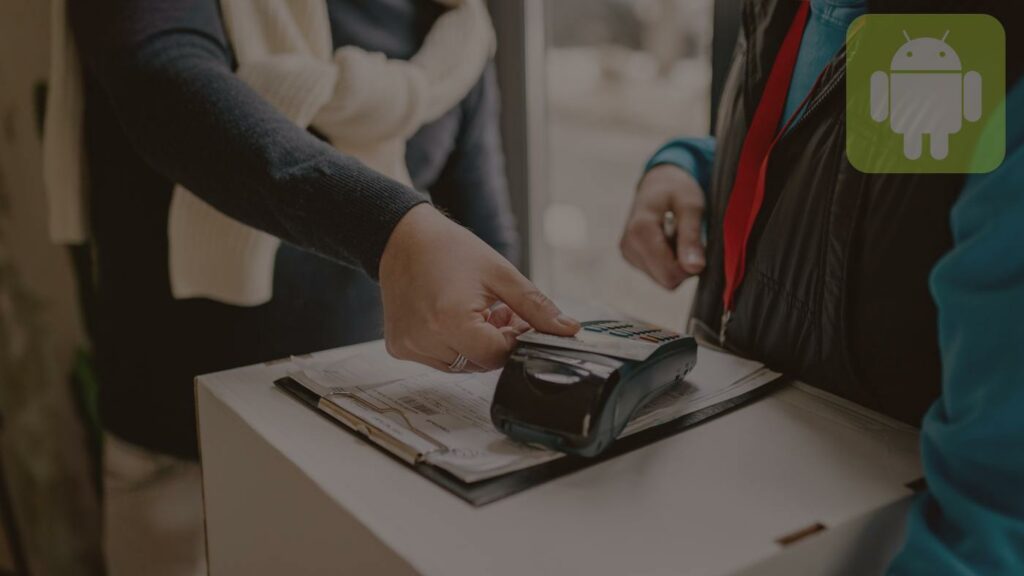Imagine buying your morning coffee with digital change from your online wallet. What if that could extend to purchasing online articles or streaming a single song? Micropayments are transforming how we consider transactions for low-cost digital goods and services.
Traditionally, buying and selling have revolved around larger transactions, but the internet has opened the door to pay-as-you-go models. Micropayments — typically defined as transactions of less than a few dollars — enable new ways to monetise content and services, making them more accessible and affordable.
This article explores the intricate world of micropayments, including an overview of what they are, their benefits and challenges, and what the future holds. We will also delve into prescribed best practices for fair rates and secure transactions, shedding light on this revolutionary approach to commerce.
Overview of Micropayments
Micropayments represent a growing necessity in the evolving landscape of digital content consumption and online transactions.
Crucial to the facilitation of micropayments are various methods of conveyance. Credit cards, commonly employed for larger transactions, also play a role in the micropayment model despite the potentially prohibitive transaction fees associated with small amounts. Significantly, the digital sphere has burgeoned with alternatives in the form of micropayment processors, digital wallets, and mobile payment apps—PayPal being a prime example—that refine the efficiency of these petite exchanges. Beyond conventional platforms, blockchain technologies introduce cryptocurrencies as innovative contenders in this space, further diversifying the micropayment landscape.

Well-known beneficiaries of micropayment systems include corporations like Google Play and Apple’s App Store, which have democratised access to a smorgasbord of digital content, from apps to movies on demand. These platforms—and many other micropayment platforms and third-party micropayment providers—epitomise the successful integration of this payment structure into modern consumerism.
Transitioning from physical gift cards and the advertising-based model, micropayments have unveiled new business models where digital items and virtual goods become accessible through low-threshold financial commitments. Such flexibility has encouraged a wide range of consumers to engage in occasional or one-time online content purchases, thus broadening the market for content creators and service providers.
What are Micropayments?
Micropayments are small financial transactions, generally geared towards the procurement of online content or services. The term does not pin down a rigid monetary value, rather it is defined by each micropayment processor’s parameters, with some considering transactions below a dollar, while others extend the notion to encompass amounts up to £20.
In essence, micropayments facilitate transactions that, due to their low value, might be impractical or uneconomic within the framework of conventional payment systems with higher transaction fees. With the advent of online content diversification—ranging from streaming platforms, digital publishing, in-app purchases to on-demand movie services—micropayments serve as the backbone enabling financial transactions that match the nature of these services.

Service providers and third-party micropayment providers have devised specialised platforms to streamline these small-scale transactions, offering consumers a plethora of payment options, including debit cards, credit cards, and emerging digital currencies. The flexibility awarded by these micropayment systems underscores their significance, crafting a payment model that aligns perfectly with the incremental consumption habits prevalent in the digital era.
Benefits of Micropayments
One of the paramount benefits of micropayments is the democratisation of access to a wide array of online content and services. This model enables customers to trial or purchase precise quantums of digital content—an individual article, a movie on demand, a virtual item in a game—thereby removing the hurdle of a steeper access fee associated with a bulk purchase or subscription.

For businesses and content creators, micropayments offer new revenue streams where an advertising-based model may be less effective or applicable. Instead of relying on bulk sales or subscription models, businesses can adopt a micropayment model that fits well with low-cost digital goods, incrementally generating revenue from a plethora of small transactions.
Moreover, the provision of micropayments encourages customer engagement. By reducing the initial financial commitment required to engage with content or services, consumers are more likely to explore and purchase. This not only nurtures customer loyalty but has the potential to attract new users who might hesitate at higher price points—especially service providers who might benefit from the increased exposure and market reach afforded by micropayments.
Challenges of Micropayments
Despite their appeal, micropayments are encumbered with intrinsic challenges, particularly when navigating the intersection of technology and user experience. The scalability of blockchain networks—an infrastructure with substantial potential for micropayment processing—remains an issue. While blockchain provides a secure and transparent ledger for such transactions, the technology must mature to handle high volumes of transactions efficiently and economically, which is crucial for the widespread adoption of micropayments.
From a regulatory perspective, there are hurdles to overcome. Each territory’s financial authorities wield their regulatory frameworks, which can pose difficulties for micropayment service providers operating across borders. Ensuring compliance while maintaining streamlined service is nontrivial, necessitating adept navigation of the complex regulatory landscape.
In the realm of user experience, creating a seamless and intuitive process for micropayments is vital. Yet, this remains a challenge, as the convenience of the transaction process is a determinant factor in user adoption. A cumbersome payment process may deter users, whereas a smooth, hassle-free service can significantly enhance uptake.
Overall, the burgeoning dynamics of micropayments demand careful consideration and innovative solutions to overcome the challenges faced. As digital ecosystems continue to grow and encompass an ever-wider array of services and goods, the role of micropayments becomes increasingly pivotal, bridging the gap between consumer affordability and the monetisation of digital content.
Future Trends in the Micropayment Industry
The micropayment industry is poised for significant evolution with the advent of web3 and the growing trend of direct payments. This innovation could disrupt traditional financial systems by removing the need for intermediaries in small transactions, which are essential for various online activities.
Web3’s capability to leverage cryptocurrencies such as Bitcoin and Ethereum heralds a new era where micropayments may become more seamless and cost-effective. Unlike conventional transaction methods involving credit cards or payment processors, these digital currencies promise minimal transaction fees and reduced transaction costs, essentially restructuring the micropayment model.

As the landscape reorients, the functionality of micropayment processors and platforms could integrate blockchain technologies to ensure faster, transparent online transactions. This could potentially affect a wide range of digital content transactions, from movie-on-demand services to in-app purchases, greatly benefiting content creators and service providers who rely on the micropayment service. The change may render physical gift cards and certain traditional business models, such as the advertising-based model or access fee structures, less relevant in favor of direct, low-cost digital goods transactions.
In summary, the future trends in the micropayment industry are heading towards a paradigm where third-party micropayment providers might adapt or dwindle, with web3 and cryptocurrency-based micropayment systems taking the forefront of online financial transactions.
Best Practices for Implementing Micropayments
When implementing micropayments, businesses need to meticulously evaluate the infrastructure required to support small transactions effectively. Convenience and speed are critical for users who expect immediate processing, necessitating a reliable system that can handle a high frequency of transactions without bottlenecks.
Security is a paramount concern. Given that micropayments are numerous and frequent, they present a vast surface for potential cyber threats. Robust security measures are essential to protect against hacking and ensure trust in the system. Moreover, it’s vital to cultivate a frictionless user experience, one that provides clarity on fees and enables effortless payment execution.
Minimising mental friction, or the psychological resistance a user might feel when parting with money frequently, is an important objective for micropayment systems. Strategies such as accumulating charges to present as a single total cost or offering subscriptions can help to mitigate this friction.
Finally, the regulatory landscape around digital currencies is dynamic. It is incumbent upon businesses implementing cryptocurrency micropayments to continuously monitor and adapt to these regulations to minimise risk and remain compliant.
How to set fair micropayment rates for consumers and content creators
Setting equitable micropayment rates is a balancing act between ensuring consumers are not overburdened by costs and adequately compensating content creators and service providers. Micropayments have become a lifeline for various professionals, supporting activities from tipping delivery drivers to freelancers receiving payment for microtasks.
Platforms such as Google Ads and YouTube harness micropayments for ad revenues, often requiring creators to amass a minimum threshold before funds are released. These microtransactions can be fractional, sometimes less than a dollar, yet by design, they accumulate to form significant earnings. Digital wallets facilitate the storage of these micropayments, releasing them once predetermined thresholds are reached.
Businesses embracing micropayment systems often find that they can monetise services that would be unfeasible under traditional payment structures. Furthermore, these systems can foster customer loyalty by offering more accessible price points for goods and services.
Ensuring secure and efficient micropayment transactions
The transition to blockchain technology is paving the way for micropayments to overcome traditional transactional challenges, such as prohibitive costs and latency issues. With blockchain, micropayments become faster and more cost-efficient, offering a more appealing proposition to both consumers and businesses.
In the case of online advertising revenue, micropayment services ensure that content creators are compensated for each view or click, securely holding these funds until withdrawal criteria are met. Similarly, government services can benefit from micropayments by offering citisens an easier method to make small, frequent payments, often leading to better compliance and lower administrative overhead.
For a business to implement a system of micropayments, establishing accounts with third-party micropayment providers is a standard approach. These providers are tasked with collecting, storing, and disbursing funds. From a consumer’s standpoint, engaging with secure micropayment transactions involves setting up an account with a micropayment provider and undergoing an authentication process for each transaction. This authentication is a key element in safeguarding the integrity of the micropayment system and maintaining user confidence.
Frequently Asked Questions
What Are Micropayments?
Micropayments are small financial transactions, often valued at a few dollars or less, designed to purchase online content or services. They make it viable to monetise content and services that, due to their low value, might not be practical to sell through conventional payment systems due to higher transaction fees.
How Do Micropayments Work?
Micropayments work through specialised platforms or processors that facilitate small transactions efficiently. These can include digital wallets, mobile payment apps, and even cryptocurrencies, which reduce the costs and complexities associated with small-value transactions.
What Are the Benefits of Micropayments?
Micropayments democratise access to a wide range of online content and services, allowing consumers to purchase or access small quantums of digital content affordably. For content creators and businesses, micropayments open up new revenue streams beyond traditional bulk sales or subscription models.
What Challenges Do Micropayments Face?
Scalability, regulatory compliance, and user experience are significant challenges. The technology, especially blockchain, must evolve to handle high volumes efficiently, and navigating different regulatory landscapes can be complex. Additionally, ensuring a seamless transaction process is crucial for widespread adoption.
What Is the Future of Micropayments?
The industry is moving towards more seamless and cost-effective models, thanks to advancements in web3 and cryptocurrencies. These technologies could reduce or eliminate the need for intermediaries in transactions, making micropayments even more accessible and affordable.
How Can Businesses Implement Micropayments Successfully?
To successfully implement micropayments, businesses should focus on creating a secure, efficient, and user-friendly transaction process. This includes ensuring robust security measures, minimising transaction friction, and staying adaptable to regulatory changes, especially concerning digital currencies.
How Do You Set Fair Micropayment Rates?
Setting fair micropayment rates involves balancing affordability for consumers with adequate compensation for content creators. Businesses should consider the value provided by the content or service, market demand, and the overall micropayment ecosystem to determine appropriate rates.
How Can Micropayments Ensure Secure Transactions?
Leveraging blockchain technology and other secure platforms can help ensure the integrity and security of micropayment transactions. Authentication processes for each transaction also play a crucial role in safeguarding the system and maintaining user trust.
Can Micropayments Benefit Government Services?
Yes, micropayments can offer a more convenient way for citisens to make small, frequent payments for government services, potentially improving compliance rates and reducing administrative costs.
Final Words
Micropayments are reshaping the landscape of online transactions, offering a flexible and inclusive model for accessing digital content and services. By facilitating small financial exchanges, this innovative payment method broadens the horizon for content consumption and creation, enabling a pay-per-use model that aligns with contemporary digital habits.
For businesses and content creators, embracing micropayments can unlock new revenue streams and customer engagement strategies, moving beyond traditional subscription or ad-based models. This transition not only fosters a more dynamic marketplace but also enhances the value proposition for consumers, making premium content more accessible and affordable.
However, the adoption of micropayments is not without its challenges. Scalability, security, and regulatory compliance remain critical considerations. As the digital economy continues to evolve, staying informed and adaptable to these emerging technologies and payment methods will be crucial for businesses aiming to thrive in the digital age.


